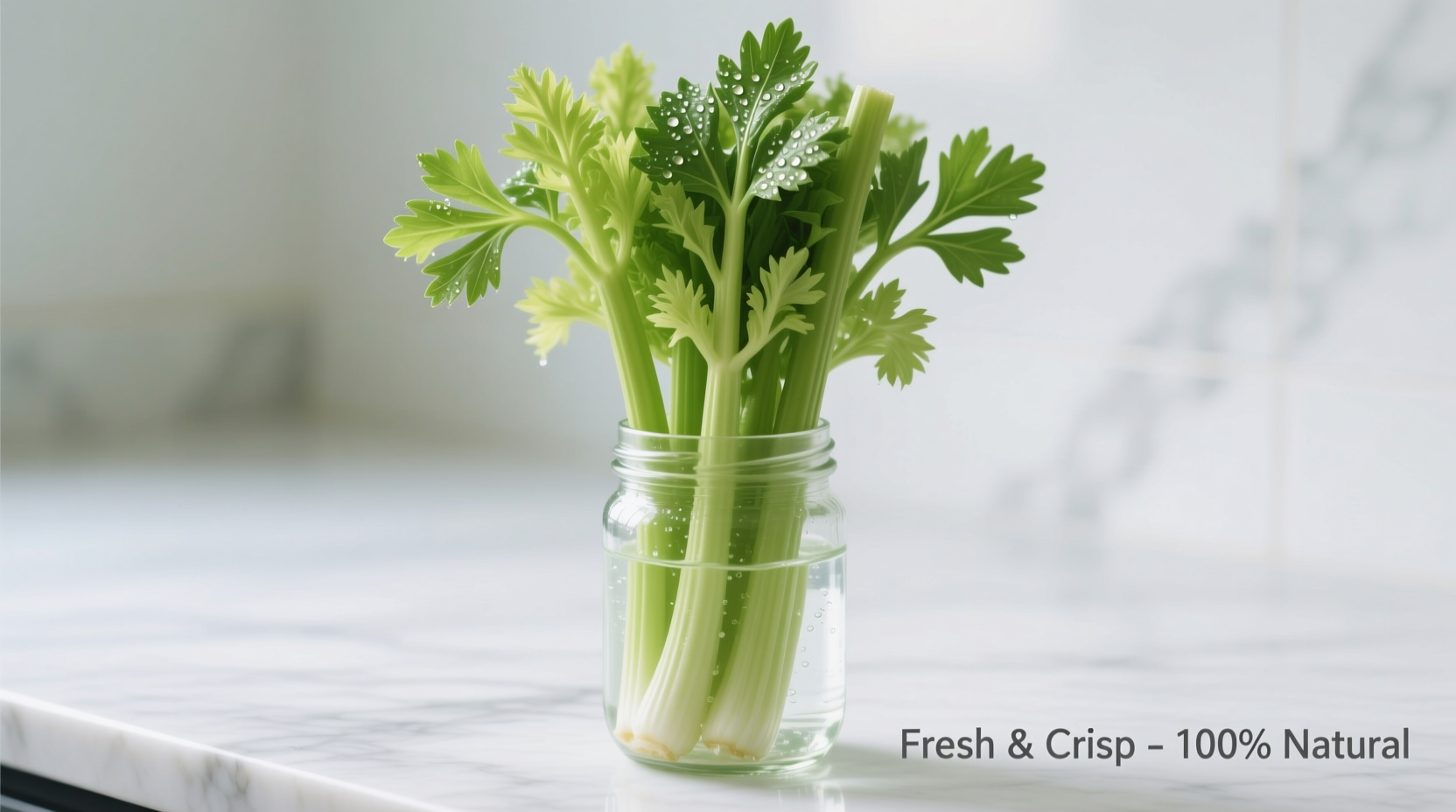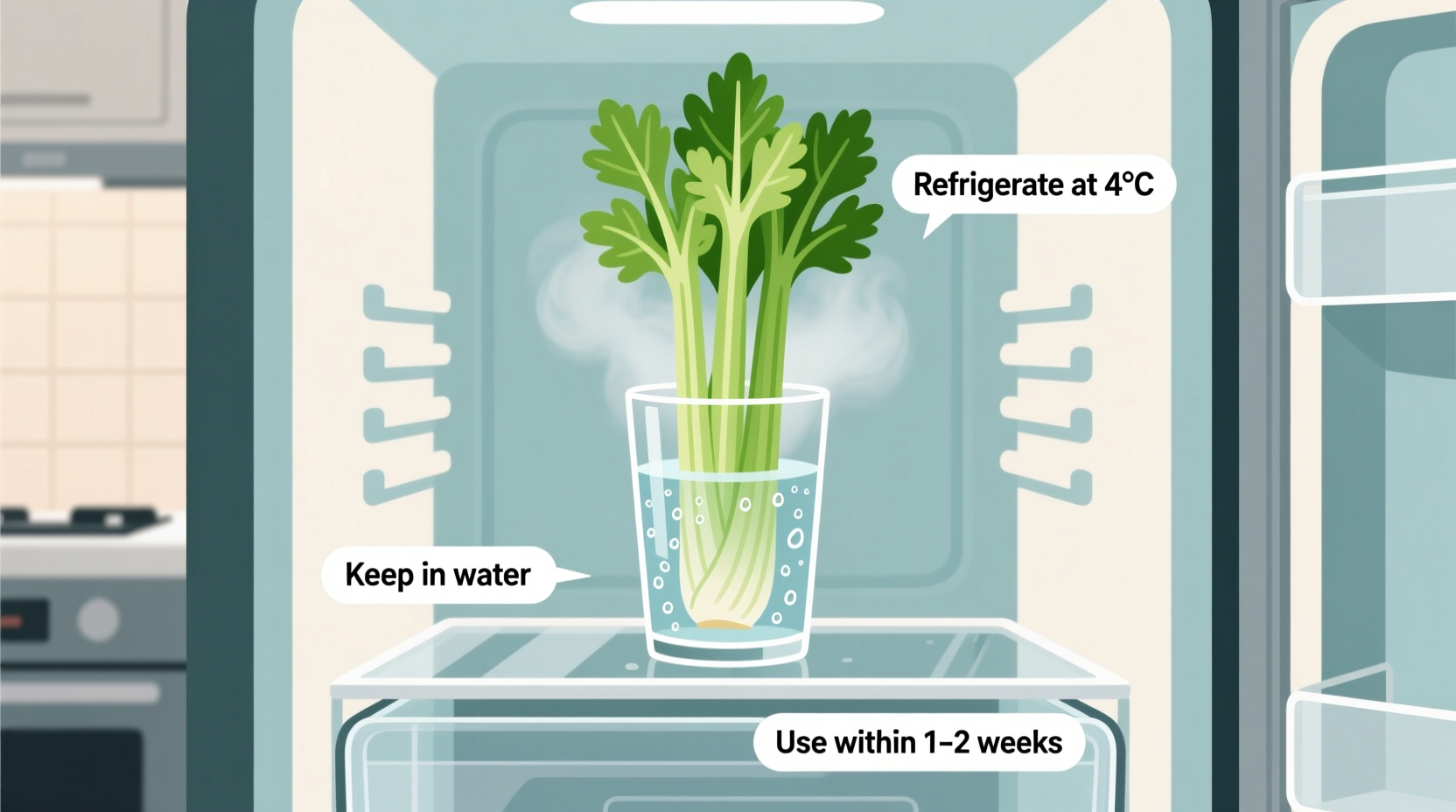Celery's notorious tendency to wilt within days frustrates home cooks everywhere. As someone who's worked in professional kitchens and taught home cooks for over 15 years, I've tested every storage method to find what actually works. The right technique can extend your celery's freshness from mere days to nearly a month, reducing waste and ensuring crisp crunch whenever you need it.
Why Celery Spoils So Quickly
Celery consists of 95% water, making it exceptionally vulnerable to moisture loss. When exposed to air, its fibrous stalks rapidly dehydrate, becoming limp and rubbery. University of California Davis' Postharvest Technology Center confirms that proper humidity control is critical for celery preservation, as it loses quality faster than most vegetables when stored incorrectly.
Step-by-Step Storage Methods That Actually Work
The Water Method: Maximum Freshness
This professional kitchen technique delivers the longest-lasting results:
- Trim the base of your celery bunch
- Stand stalks upright in a container
- Add 1 inch of cold water to cover the cut ends
- Cover loosely with a plastic bag
- Store in the refrigerator's crisper drawer
- Refresh water every 3-4 days
This method works because it continuously replenishes the water celery loses through transpiration. According to USDA food safety guidelines, keeping cut ends submerged maintains optimal hydration while the refrigerator's cold temperature slows decomposition.
Aluminum Foil Method: Convenient Alternative
When you need something simpler:
- Keep celery whole (don't wash yet)
- Tightly wrap stalks in aluminum foil
- Store in the main refrigerator compartment (not the crisper)
- Unwrap only when ready to use
The foil creates a semi-permeable barrier that regulates humidity while allowing ethylene gas to escape. Cornell University's Food Science Department notes that this method prevents the excessive moisture buildup that causes spoilage in plastic bags.
Avoid These Common Storage Mistakes
Many home storage techniques actually accelerate celery's decline:
- Leaving celery in its original plastic grocery bag
- Storing unwashed celery in airtight containers
- Refrigerating cut celery without water replenishment
- Keeping celery near ethylene-producing fruits like apples or bananas
| Storage Method | Expected Freshness Duration | Texture Quality |
|---|---|---|
| Water container method | 3-4 weeks | Consistently crisp |
| Aluminum foil wrap | 2-3 weeks | Slightly less crisp after week 2 |
| Plastic bag (original packaging) | 3-5 days | Rapidly becomes limp |
| Airtight container | 5-7 days | Becomes rubbery quickly |
Reviving Wilted Celery
Don't toss celery that's starting to soften. The National Center for Home Food Preservation recommends this simple revival technique:
- Cut 1/2 inch from the base of limp stalks
- Submerge completely in ice water
- Refrigerate for 2-4 hours
This process allows the celery to rehydrate through capillary action. Most stalks will regain 80-90% of their original crispness, making them suitable for both raw consumption and cooking.
Storing Cut Celery Properly
For pre-cut celery pieces:
- Place in an airtight container
- Add a damp paper towel to maintain humidity
- Store submerged in water for maximum freshness
- Change water daily to prevent bacterial growth
Food safety experts at the FDA recommend using cut celery within 3-4 days for optimal quality and safety, as the exposed surfaces create entry points for microorganisms.
Signs Your Celery Has Spoiled
Discard celery showing any of these indicators:
- Visible mold (white, green, or black spots)
- Strong unpleasant odor
- Excessive softness or mushiness
- Discoloration beyond normal browning
Unlike some vegetables, celery doesn't have a 'safe' spoiled stage—when it shows significant spoilage signs, it should be discarded immediately.

Seasonal Storage Considerations
Celery's storage needs change slightly with seasons. During summer months when home refrigerators work harder, the water method becomes even more critical as standard storage yields noticeably shorter freshness periods. The University of Massachusetts Extension notes that refrigerator temperature fluctuations of just 2-3 degrees can reduce celery's shelf life by up to 30%.
Freezing Celery for Long-Term Storage
For extended preservation beyond fresh storage limits:
- Wash and chop celery to desired size
- Blanch in boiling water for 3 minutes
- Immediately plunge into ice water
- Drain thoroughly and pat dry
- Store in airtight freezer bags with air removed
Properly frozen celery maintains quality for 12-14 months and works perfectly in soups, stews, and cooked dishes, though it won't retain crispness for raw applications.
Practical Storage Tips for Busy Cooks
Implement these time-saving strategies:
- Prep a week's worth of celery sticks using the water container method
- Store celery away from strong-smelling foods as it readily absorbs odors
- Keep whole celery unwashed until ready to use to prevent premature spoilage
- Place celery in the warmest part of your refrigerator (usually the door isn't ideal)











 浙公网安备
33010002000092号
浙公网安备
33010002000092号 浙B2-20120091-4
浙B2-20120091-4